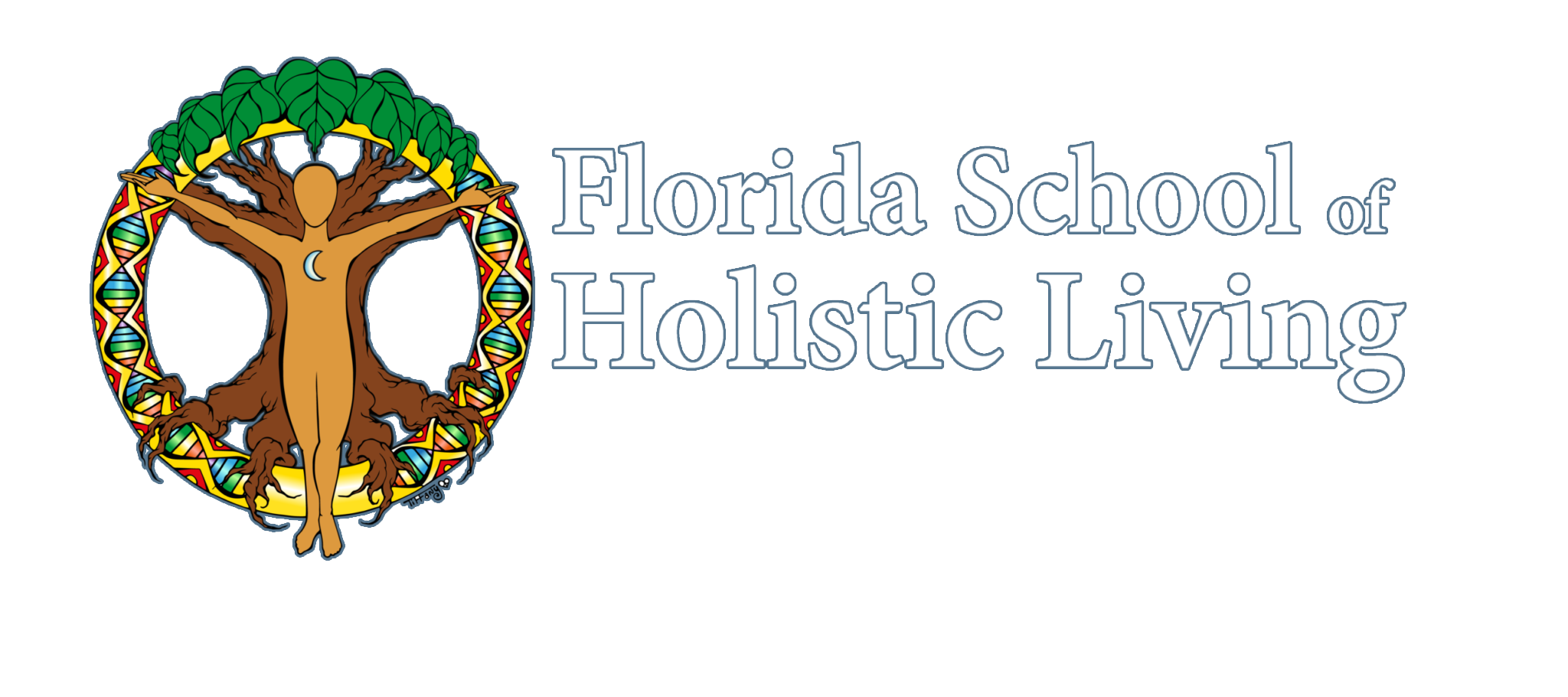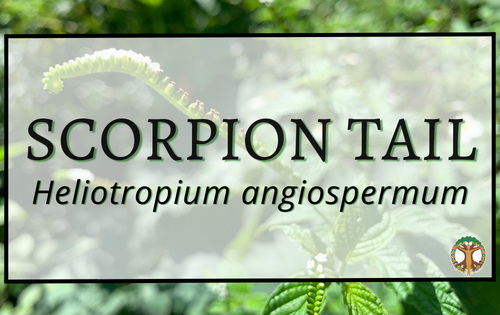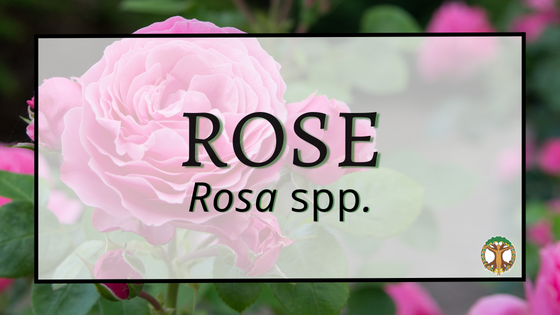
Rose
Contributor: Kelsy Provost, Current Community Herbalist Program Student
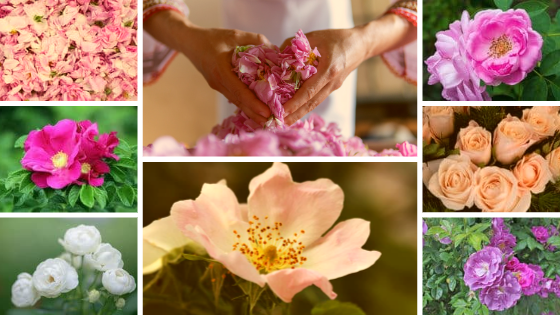
Image Description:
Left column from top to bottom – Rosa damascena, R. rugosa, R. multiflora
Middle column from top to bottom – R. damascena, R. canina
Right column from top to bottom – R. damascena, R. virginiana, R. virginiana
Latin Name: Several different species can be used, like Rosa damascena, R. canina, R. rugosa, R. virginiana, R. multiflora, R. gallica, R. centifolia, R. palustris, R. spinosissima, and a few others. It’s important to note that not all garden variety roses can be used, so be sure to verify your rose species before adding them to your herbal collection.
Common Names: Damask rose, dog rose, queen of the flowers, rugosa rose, Virginia rose, baby rose, sweet briar rose, seven-sisters rose, Gallic rose, French rose, swamp rose, Provence rose, cabbage rose, Rose de Mai, Scotch rose, and more!
Family: Rosaceae
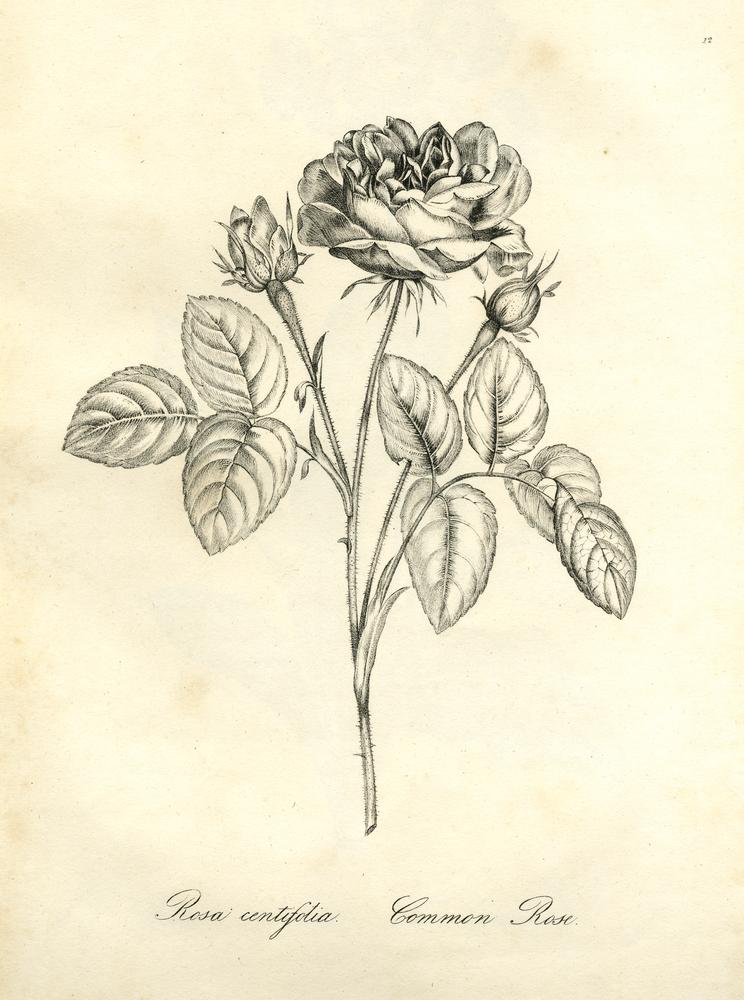
Lithograph British Museum, Public domain, via Wikimedia Commons
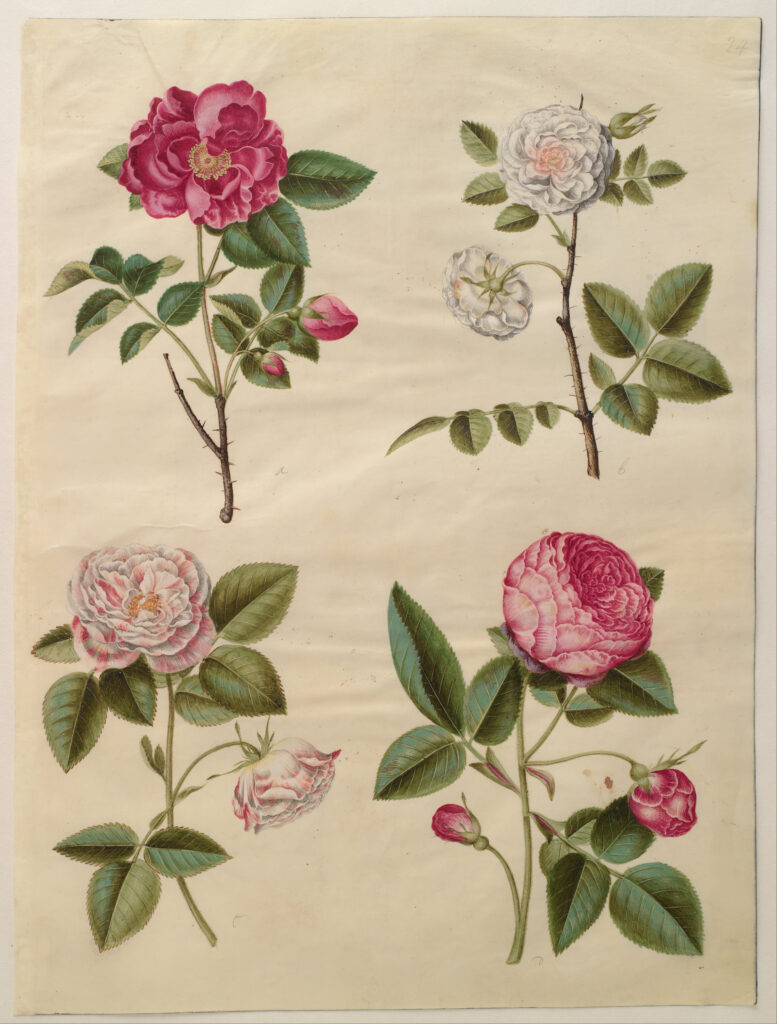
Family Habitat: Many roses grow in dense shrubs, but some are vining. Some species have thorny and bristly stems with alternatively pinnate, compound leaves. Wild rose flowers have five petals and numerous stamens, usually in shades of pink but sometimes white.
Parts Used: Petals, fruit (called hips), and leaves.
History/Tradition: In the Middle Ages, the hips of the dog rose were revered as ‘sweet meat,’ and the flower itself was thought to remedy depression. The flowers have been used since that time to support healing from chest conditions. The 6th century (BCE) Greek poet, Sappho, described the red R. gallica rose as the ‘Queen of the Flowers.’ In Rome, red petals were consumed as food. Rosewater was thought to have first been prepared by ancient Arab physician Avicenna in 980-1037 CE.
Energetics: Cooling, moistening (petals), and drying (hips)
Systems: Can help support the heart from an emotional and physical standpoint. Rose can also help combat bladder infections, bodily pain, colds, flu, depression, and grief.
Actions: Astringent, analgesic, aphrodisiac, antimicrobial, antispasmodic, antioxidant, gentle astringent, and aromatic nervine.
Cautions: Avoid using roses that may be contaminated with pesticides like those you’d find at a florist. These are not intended for consumption.
Also, it’s important to note that not all roses can be used medicinally. It’s vital to verify identity before use.
Check out the video plant profile on YouTube
Disclaimer: This video plant profile was prepared by Naomi Maharaj, a current Community Herbalist Program student in her personal capacity. The information shared and opinions expressed in this video are the author’s own and do not directly reflect the view of the Florida School of Holistic Living.
Constituents: Volatile oils, tannins, cyanin (seeds), Carotenoids, Lycopene, Vitamins C, B3, E, and K (hips), Flavonoids, Polysaccharides, and Omega 3 (seeds)
Culinary Use: Makes a lovely tea that blends well with other herbs and combines beautifully with other aphrodisiacs like cacao and damiana. Rosehips make a tart and tasty jam. It can be infused with spirits like mead (honey wine).
Other Uses: Flower essences, added to herbal baths, used for an eye wash, combined with strong antimicrobials for an oral rinse, immune deficiency support, and cosmetics (Rosehip seed oil, rose toners, and moisturizers). It can also be added to smoking blends.
Disclaimer: This content is intended for educational purposes only. Please consult your healthcare provider before making changes based on the material.
References:
https://www.herbrally.com/monographs/rose
https://www.herbalremediesadvice.org/rose-benefits.html
https://www.botanical.com/botanical/mgmh/r/roses-18.html
https://commonwealthherbs.com/rose-herb-of-the-week/
Encyclopedia of Herbal Medicine, by Andrew Chevallier, FNIMH (p.263)
The Lost Book of Herbal Remedies, by Nicole Apelian, Ph.D., and Claude Davie (p. 264-266)



